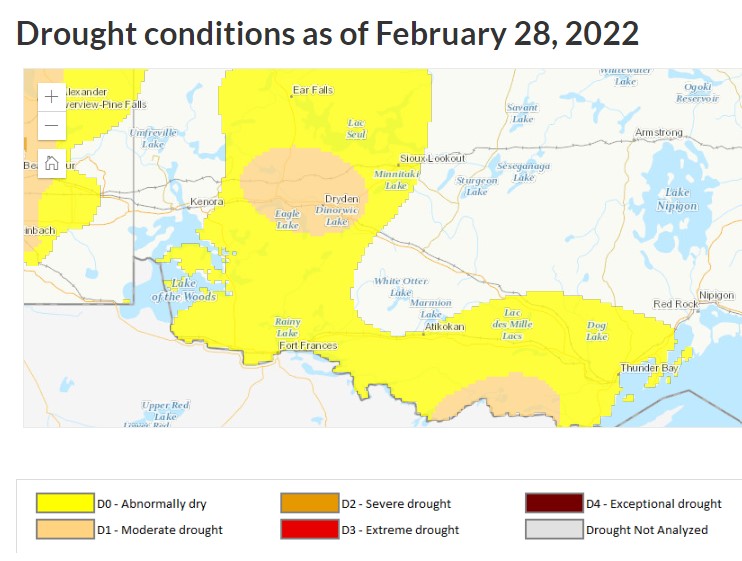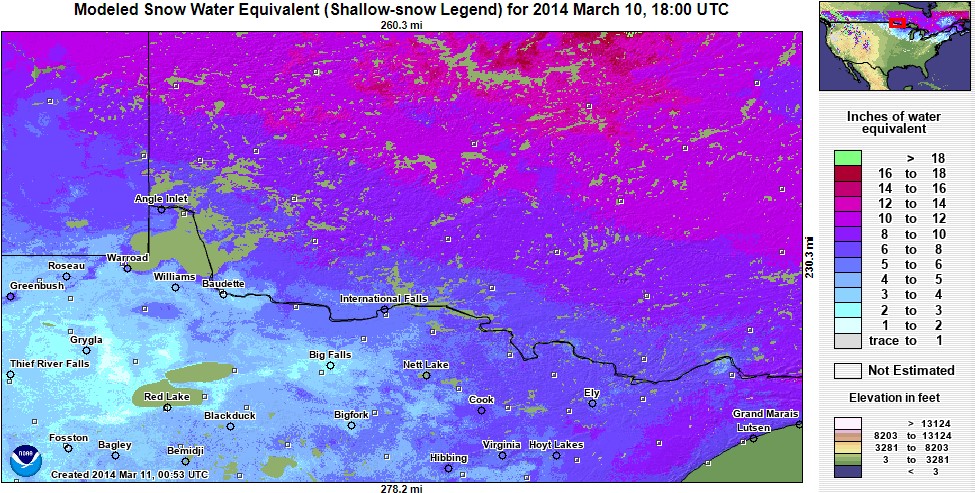2022.08.17 Levels Forecast & Regulation Strategy
The current level of Lake of the Woods is 323.73 m (1062.1 ft), over 95th percentile level for this time of year. The average lake level declined by 12 cm (4 in) over the past week. Widespread precipitation fell over the past several days, with heaviest amounts over Lake of the Woods and the Big Fork and Little Fork river sub-basins. The recent steady drop in Lake of the Woods level stalled briefly due to this rain, but is expected to resume at a slightly slower rate of 5to 8 cm (2 to 3 in) per week. The dams in Kenora remain fully open.
The Winnipeg River between Kenora and Minaki is expected to gradually fall between 5 to 8 cm (2 to 3 in) over the next week as the Lake of the Woods level falls.
The current level of Lac Seul is 356.62 m (1170.0 ft), an 80th percentile level for this time of year. The level of the main body of Lac Seul declined by 3 cm (1 in) over the past week and is expected to decline by 5 to 8 cm (2 to 3 in) over the next week. Lac Seul authorized outflow is 450 m³/s with no scheduled changes.
Throughout the spring, the Lake of the Woods Control Board has been operating on an emergency basis, with meetings every few days to review the latest basin conditions and forecasts in order to make regulation decisions and provide frequent updates on forecasts to the public. The Board has also been active in briefing First Nations, municipalities and provincial and federal ministries involved in the emergency response to flooding across the basin.
With the return to normal summer levels for Lac Seul and a continued drop of Lake of the Woods expected this month, the Board has resumed normal operations according to an adopted Regulation Strategy. On August 16, the Board held a Regulation Consultation call with invitations to Grand Council Treaty #3 and representatives of Specific Interest Groups and Resource Agencies. Participants received a briefing of current conditions and forecasts and an overview of a draft strategy to operate Lake of the Woods and Lac Seul dams through to the end of October under a range of possible flow conditions. Participants were then given the opportunity to provide feedback on the strategy. The adopted Regulation Strategy is available at https://lwcb.ca/noticeboard/regulation/.
A key focus of the strategy is maintaining maximum outflow from Lake of the Woods until the lake level returns to the legislated operating range, followed by a balanced drawdown of the lake and the Winnipeg River in order to reach normal water levels ahead of freeze-up.




